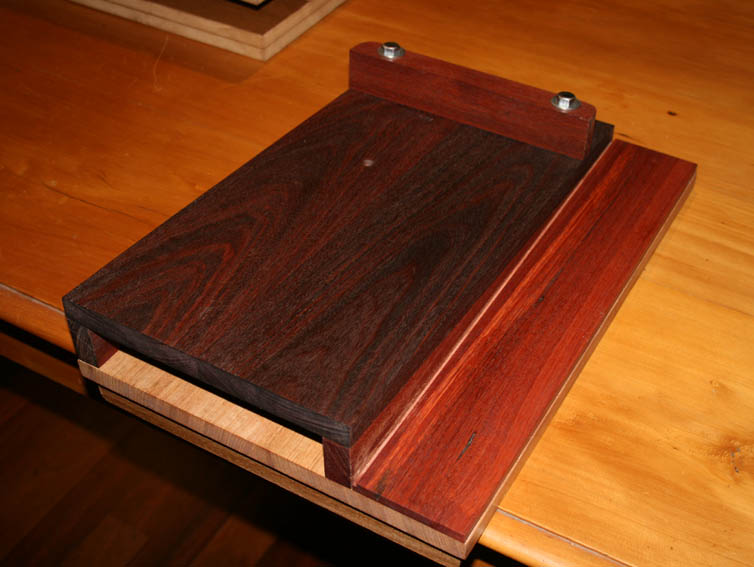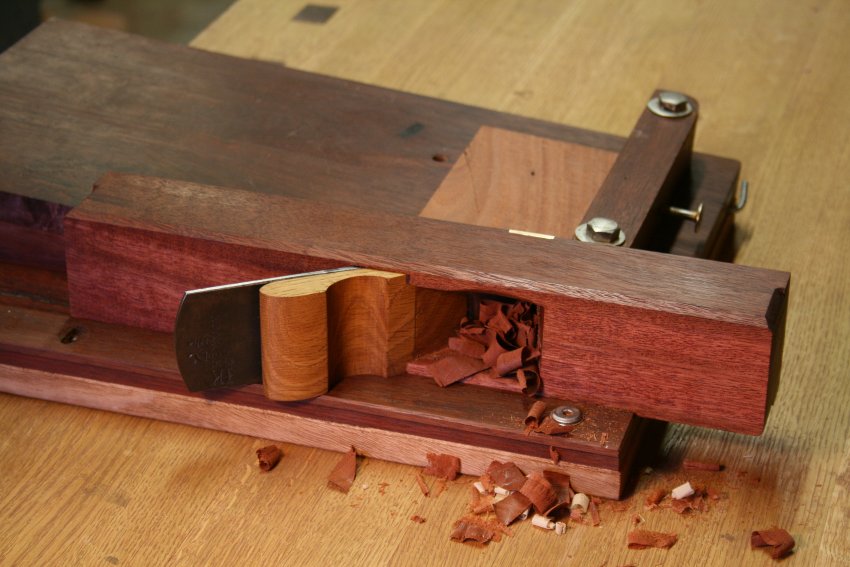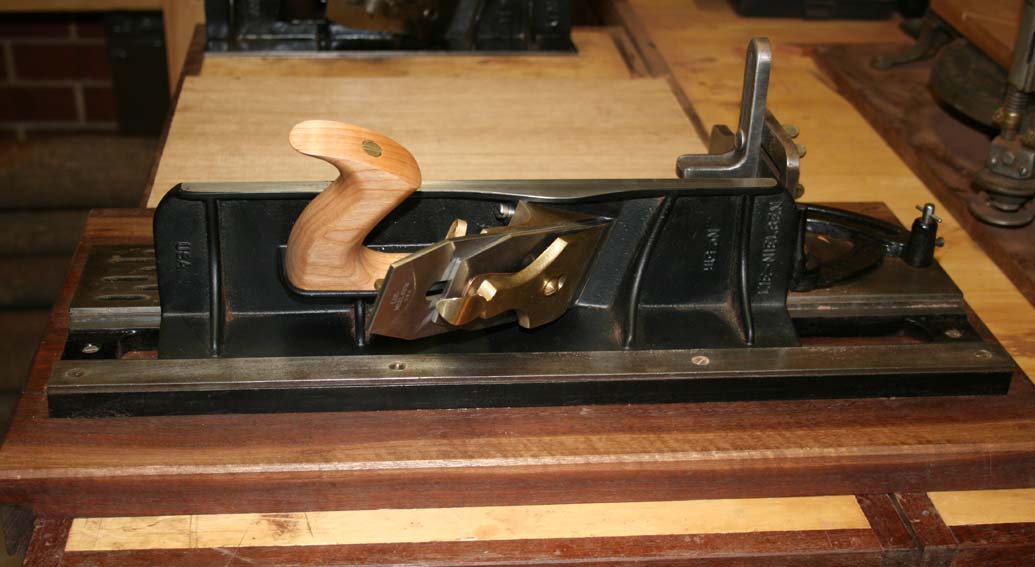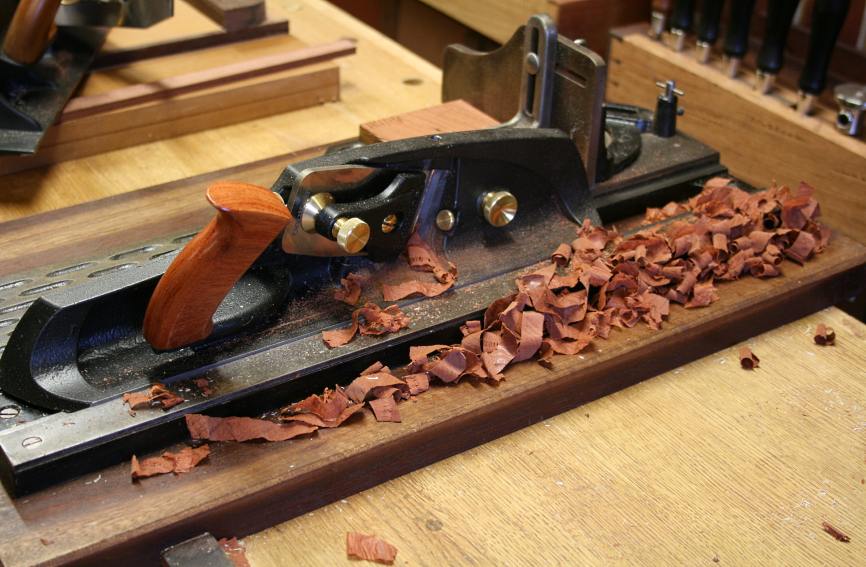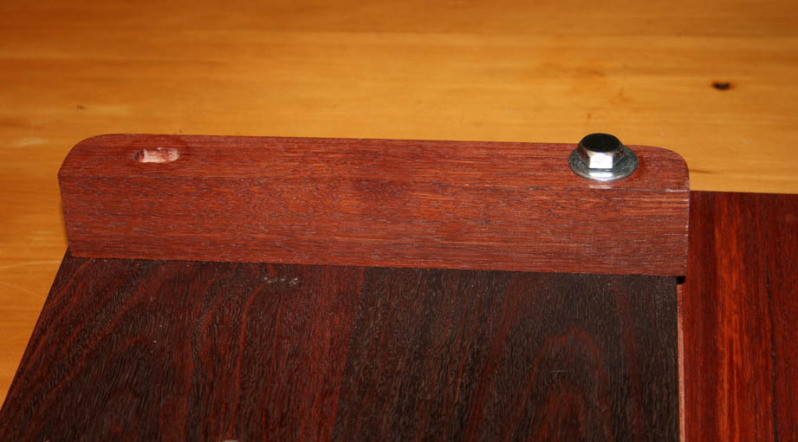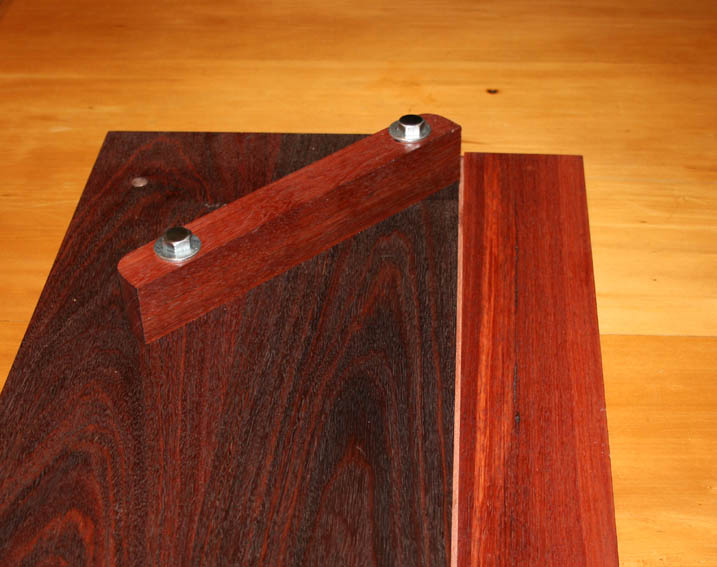Today I made a good start on the shooting board I decided I absolutely need if I'm going to make anything remotely good. I eschew the use of the mitre saw to get things nice and square. By chance I read @Derek Cohen (Perth Oz)'s post(s) of his ramped version and decided I would like to have a bash at that. Thanks Derek.
Stock used so far: Red Grandis for the base and top deck, Sapelle for the standoff (ramped). 8mm dowel to help joint it up. Undecied about the fence atm, I think either keep it sapelle or use hard maple. suggestions welcome! I have these plus english oak and ash I could use - and some beech firewood too that I've squared two sides of already.
Main Base all planed up ready for glue and dowel.

Glue up went smooth!

Top Deck ready

Lots of planing

Finished Base. Planing practice has paid off. I'm really happy with this.

Top Deck all planed

Planing the ramp.



Here we are after today. Ended up being a 3.5degree slope. I've no idea if this is a good slope or not. But it's as much sloped as I can dare go with the handplane. I planed both the struts together to help keep them twins. Needed a little sanding owing to the slightly different amount of flex in the terminal end. I've put a lump of beech at the end which was firewood but I've scrub planed then finish planed two sides square. To get the most utility out of the shooting board I guess the top deck should be as thin as possible but I'll be mainly using it for 2" max so will try work out how tall the fence needs to be to achieve this. And I'll need to plane a rebate into it to accomodate the plane blade. I could perhaps wait until it's all assembled for this and just dry fire it until a rebate appears?

Stock used so far: Red Grandis for the base and top deck, Sapelle for the standoff (ramped). 8mm dowel to help joint it up. Undecied about the fence atm, I think either keep it sapelle or use hard maple. suggestions welcome! I have these plus english oak and ash I could use - and some beech firewood too that I've squared two sides of already.
Main Base all planed up ready for glue and dowel.

Glue up went smooth!

Top Deck ready

Lots of planing

Finished Base. Planing practice has paid off. I'm really happy with this.

Top Deck all planed

Planing the ramp.



Here we are after today. Ended up being a 3.5degree slope. I've no idea if this is a good slope or not. But it's as much sloped as I can dare go with the handplane. I planed both the struts together to help keep them twins. Needed a little sanding owing to the slightly different amount of flex in the terminal end. I've put a lump of beech at the end which was firewood but I've scrub planed then finish planed two sides square. To get the most utility out of the shooting board I guess the top deck should be as thin as possible but I'll be mainly using it for 2" max so will try work out how tall the fence needs to be to achieve this. And I'll need to plane a rebate into it to accomodate the plane blade. I could perhaps wait until it's all assembled for this and just dry fire it until a rebate appears?


































